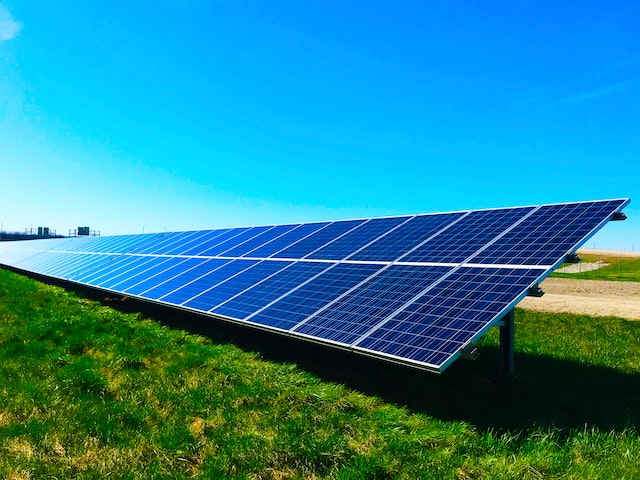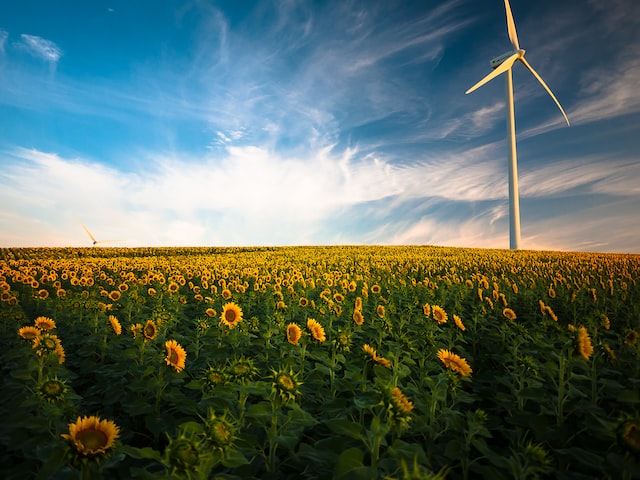Mitigation involves reducing greenhouse gas emissions and increasing energy efficiency, while adaptation focuses on making changes that will make it easier to cope with the impacts of climate change. Both approaches are necessary if we want to protect our environment and ensure a sustainable future for ourselves and generations to come.
What is mitigation?
(Photo by Chelsea on Unsplash )

Mitigation refers to the efforts taken to reduce or prevent the negative impact of a particular event or situation. In the context of risk management, mitigation involves identifying potential risks and taking steps to minimize the likelihood and/or severity of their impact.
For example, in the case of natural disasters such as hurricanes, mitigation efforts may include building stronger and more resilient structures, reinforcing infrastructure, and implementing early warning systems to evacuate people in harm’s way.
In the context of climate change, mitigation efforts may include reducing greenhouse gas emissions, developing renewable energy sources, and promoting energy efficiency measures.
Mitigation can also be applied to other areas, such as cybersecurity, where measures are taken to prevent or minimize the impact of cyber attacks.
Overall, mitigation involves proactive steps to prevent or minimize the impact of negative events or situations, and it is an important aspect of risk management and disaster preparedness.
What is adaptation?

Adaptation refers to the process of adjusting or modifying one’s behavior, lifestyle, or environment in response to changes in the surrounding conditions. In the context of climate change, adaptation refers to the measures taken to cope with the impacts of changing weather patterns and environmental conditions.
Adaptation can take many forms and can occur at the individual, community, or national level. For example, in areas prone to flooding or drought, individuals may adopt water conservation measures, plant drought-resistant crops, or build homes on stilts. Communities may develop early warning systems, improve drainage systems, or build sea walls to protect against rising sea levels.
At the national level, governments may implement policies to encourage the development of sustainable infrastructure, provide financial assistance to vulnerable communities, or develop new technologies to address climate change.
Overall, adaptation involves taking proactive steps to adjust to changing conditions and reduce the negative impacts of climate change. It is an important aspect of climate resilience and disaster preparedness.
Mitigation Vs. Adaptation – Key differences
When it comes to climate change, there are two main approaches that people take: mitigation and adaptation. Both have their own advantages and disadvantages, so it’s important to understand the key differences between them.
Mitigation is all about reducing the amount of greenhouse gases that are released into the atmosphere. This can be done through things like using renewable energy instead of fossil fuels, planting trees, and increasing energy efficiency. The goal of mitigation is to slow down or even stop climate change from happening.
Adaptation, on the other hand, is about making changes in our own lives to deal with the effects of climate change that have already happened or that we expect to happen in the future. This might include things like building flood defense’s, developing drought-resistant crops, or relocating to a cooler area. The goal of adaptation is to make sure that we can still live our lives even as the climate changes around us.
Examples of mitigation
There are a number of ways to mitigate the effects of climate change, and many of them are relatively simple and inexpensive. For example, planting trees and other vegetation can help to absorb carbon dioxide from the atmosphere, and reduce the amount of heat that is reflected back into the atmosphere. Another way to mitigate climate change is to use more energy-efficient appliances and light bulbs, which can help to reduce overall energy consumption. Finally, driving less often or carpooling can also help to reduce emissions of greenhouse gases.
Examples of adaptation
There are many examples of adaptation, but here are a few key ones:
- Building flood defense’s such as levees and seawalls
- Developing early warning systems for extreme weather events
- Creating drought-resistant crops
- Improving water management and efficiency
Which is better between mitigation and adaptation?
There is no clear answer as to whether mitigation or adaptation is better. Both have their own advantages and disadvantages. Mitigation typically refers to actions taken to reduce greenhouse gas emissions and slow the rate of climate change. Adaptation, on the other hand, focuses on making changes in order to better deal with the impacts of climate change that are already occurring or are projected to occur in the future.
Mitigation efforts can be costly and may not always be successful in achieving their desired results. Additionally, they often require lifestyle changes that may be difficult for people to make. For example, switching to a low-carbon diet or using public transportation instead of driving a car. However, mitigation activities can help prevent some of the worst impacts of climate change from occurring and can also improve public health by reducing air pollution.
Adaptation measures can also be costly, but they tend to be less expensive than mitigation efforts. Additionally, adaptation strategies often have co-benefits that make them more attractive than mitigation options. For example, planting trees can help cool homes and provide shade, while also helping to sequester carbon dioxide from the atmosphere. Implementing early warning systems for extreme weather events can save lives and protect property from damage.
In general, both mitigation and adaptation are important for dealing with climate change. Reducing greenhouse gas emissions is necessary to slow the rate of climate change and prevent its worst impacts from occurring. However, adapting to the changing climate is also essential in order to protect people
What is adaptation or mitigation measures?
There are many ways to define adaptation and mitigation, but in general, adaptation can be thought of as measures taken to adjust to climate change (i.e., making changes in order to reduce the negative impacts of climate change), while mitigation can be thought of as measures taken to reduce greenhouse gas emissions and slow the rate of climate change.
So, what are some specific adaptation or mitigation measures? Well, there are many different options, but some common ones include:
- Improving energy efficiency in buildings
- Installing solar panels or wind turbines
- Changing land use practices (e.g., planting trees)
- Developing early warning systems for extreme weather events
- Building infrastructure that is resilient to climate change impacts (e.g., sea level rise)
These are just a few examples – there are many other potential adaptation and mitigation measures out there. It’s important to note that both individuals and governments can take action on these fronts. So, if you’re interested in doing your part to address climate change, there are plenty of options available to you.
What are the examples of adaptation in disaster?
There are many examples of adaptation in disaster. One example is evacuation. When a disaster is imminent, people often evacuate to avoid the area of impact. This is an example of adaptation because it involves changing behavior in order to survive. Another example is building flood-resistant structures. This helps to reduce the damage caused by floods and can be considered an adaptation strategy.
What is plant mitigation?
Plant mitigation is the proactive management of plant life to reduce the risk of damage or harm caused by natural disasters. By strategically planting trees and other vegetation, local governments and homeowners can create a barrier against high winds, flooding, and wildfires. In the event of a disaster, this barrier can help protect property and infrastructure from damage.
Featured Image By – Photo by Gustavo Quepón on Unsplash








